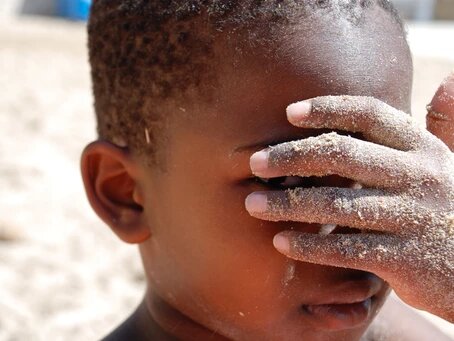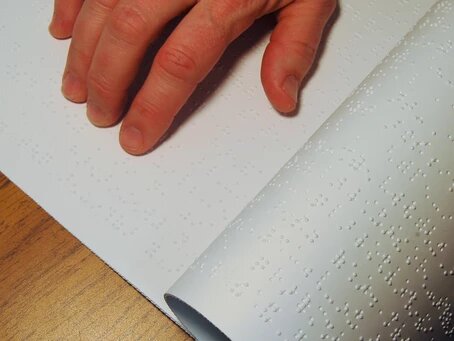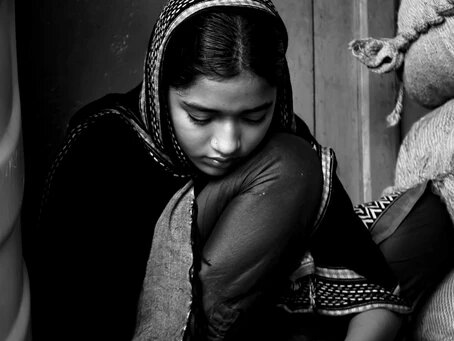“There is a boy in my class, he keeps hush and carries eyes scared;
Speaks to no one, nor does he smile,
Someday he has bruises on his hand and cheeks, the other days, they seem, in his heart.”
This extract speaks of stories of children who suffer child abuse at a very tender stage in their lives. Child abuse, for a broad understanding, can be referred to any kind of maltreatment with a child under the age of 18, by a perpetrator (parents, relatives, teachers, acquaintances or a stranger) which proves to be harmful to the child in a physical, sexual, emotional or a mental way1. It is a complicated crime where many a times the perpetrator, who can be sharing a very intimate relationship with the child, do not see it as wrongdoing. On the other hand, child, the victim, is mostly in an inexpressive stage of life; it is generally at such an early age that the child doesn’t really know how to communicate about the maltreatment. However, it has been a proven understanding that the impact of child abuse is long-lasting and can hamper a child’s growth and development in multiple aspects. Thus, it becomes a subject of extreme importance for the society to have a consensual take on prevention of child abuse cases so that no child has to ever bear a brunt of such a traumatic experience.
Prevention, as a course of action, is taking those measures which hold the potential of not letting a harmful event take place. For the matter of child abuse, preventive measures can be wisely attempted in two scenarios- before anything could happen and after something has happened. The former mainly involves the confidantes of the child to be trained enough to take care of the child in the most informed and careful manner. The first step to this, as a society, must be promoting family planning and parental counselling before conceiving a child. This pitch is drawn for the most prevalent reasons for children facing physical, mental and emotional abuse through their parents when the parents are not holistically prepared to raise a child. This is an important issue for the fact that the stated abuses take place in a way that the parents (or any other relative involved in raising the child) do not actually see it as abuse. Another step towards prevention is to teach the child about identifying good and bad touch and ways of escaping from any such company from an early age. In all these measures, the most effective is to keep the children in the safest spaces possible, if the parental company is not possible all the time, then children must be left only with the most trustworthy of people.
These are some precautionary cum preventive measures for child abuse, yet it is an unfortunate fact that even after all the care, children do end up becoming a young victim. In such a case, there are very important preventive measures which must be taken post the incidence, to both avoid any future encounters as well as to recover the child from trauma. The first step comes with noticing the child’s behaviour and identifying if there is a change or a constant variation in behavioural patterns like not speaking, becoming extremely destructive/ angry, staying in a state of fear etc. With this, then is the need of showing confidence and providing the child with a safe space in which it can speak about the instance(s) and feel rescued and secure. This must then lead to taking legal action against the perpetrator with letting the child know about all the actions and making conscious decisions of not letting the child come in contact with the perpetrator anytime. These measures need to be taken with extreme sensitivity and patience, with having a regular discourse of confidence driven discussions with the child of how is (s)he feeling.
The above-stated steps which demand an informed investment of social, emotional and physical presence need to be imbibed in us as individuals as well as a society. Society as a whole, however, is not always a promising space of confidence and relying on when it comes to child abuse. This is for the fact that it is not always feasible to protect the child from being vulnerable with the perpetrators, and a house is not always a safe space. To deal with such a situation at hand, external interventions become of much importance. Civil society initiatives along with State-led interventions play a significant role. The community involved NGOs working with children actively get indulged in spreading awareness against child abuse and promoting preventive measures, parental counselling and family planning. Then organisations like Pocketful of Sunshine, who along with community involved interventions, are also running daycare centres for children majorly residing in JJ colonies. The role of the daycare centre comes into play by keeping children in a safe space during the hours when parents are not at home. Also, with sharing comfort and confidence with the children, supervisors at the centre become space of trust for the children with whom they tend to share about any disturbing instance which the child may witness at home. Such creche models become extended ‘go-to’ places for the children where they can reach out to. Moreover, such a platform also serves as a place where cases of undiscovered child abuse can be reported and rescued. Thus, such interventions not only become reliable for the community but also play a notable role in spreading awareness as well as building an alternative for children who are not always blessed with conducive and safe conditions.
Child abuse, thus, is a prevalent yet complicated evil, layers of which cannot be easily understood. Still, it is an extremely sensitive thing to be addressed with utmost awareness and sensibility. If seen sincerely, the preventive measures are not that hard a discourse to indulge into, as it would just take all of us to pledge towards building this world a harassment-free childhood place!
References:
Fortson, B., et.al (2016) Preventing Child Abuse and Neglect: A Technical Package for Policy, Norm, and Programmatic Activities. Accessed on 15th September: https://www.cdc.gov/violenceprevention/pdf/CAN-Prevention-Technical-Package.pdf Image– Anne Maxelante




